
Stormwater Planters, Improving Our Environment and Our Neighborhoods
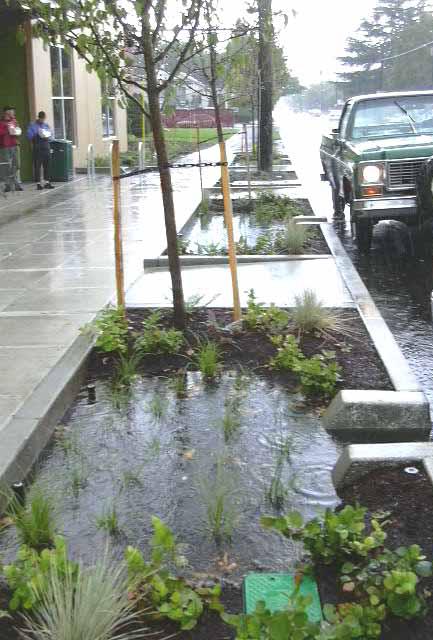 What are these things? Click to enlarge |
Beauty meets functionality
Born in Portland, Stormwater planters
|
Let The Rains Begin
With the rainy season upon us it seems appropriate to explore some recent roadside changes in our area.
Q. Have you noticed the new curbside planters popping-up everywhere and wondered what they are, and what's their purpose?
A. They're Stormwater planters. And are being installed to manage street stormwater runoff and improve the water quality of area rivers and streams.
Managing Stormwater, Naturally
Stormwater planters are a natural stormwater management approach that uses plants and soil to slow, filter, and cleanse stormwater from streets. Traditional stormwater management directs runoff into pipes. Stormwater planters disconnect street stormwater runoff from a storm sewer and manages it at its source, where rain falls, using a landscape approach.
Nationally Recognized ProgramPioneered in 2005 by the City of Portland's "12th Avenue Green Street Project," stormwater planters are now used extensively throughout Portland neighborhoods and urban areas. In fact, stormwater planters are so effective at managing stormwater runoff that cities all across the nation are following Portland's footsteps. |
 12th Ave Green Streets Project Click to enlarge |
Since 2005 the City of Portland has received many awards for its innovative designs and has become the recognized leader in green stormwater management.
Stormwater planters protect water quality in rivers and streams by removing up to 90% of pollutants. They replenish groundwater supplies, absorb carbon, improve air quality and improve neighborhood aesthetics.
How They Work
Stormwater planters are structural landscaped reservoirs used to collect, filter, and/or infiltrate stormwater runoff, allowing pollutants to settle and filter out as the water percolates through the planter soil before infiltrating into the ground below or being piped to its downstream destination.
Water flows along the curb and enters the first planter via a channel cut into the curb. Depending on flows, water will pond to a depth of 6 inches, promoting infiltration and biological uptake of pollutants.
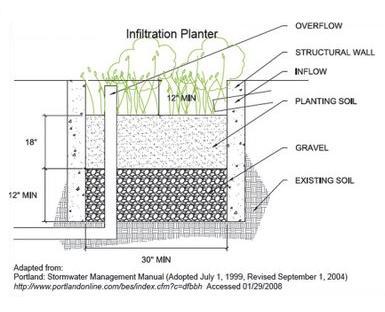 Planter cross-section Click to enlarge |
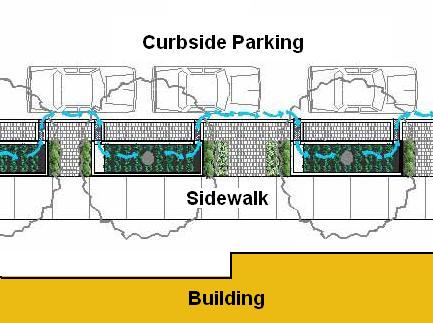 The Rain Dance Click to enlarge |
If a rain event is intense enough, water will exit through the planter’s second curb cut, flow back out into the street and eventually enter the next downstream stormwater planter. Depending on how intense a particular storm is, runoff will continue its downhill "dance" from planter to planter until all of the stormwater planters are at capacity. Once exceeding capacity, the water exits the last stormwater planter and enters the storm sewer.
Most planters are designed to pond water for less than 18 hours after each storm event. The planters themselves are designed to be long and narrow to fit into the existing sidewalk space, and they contain a mix of rushes, trees, and shrubs that provide attractive landscaping year-round.
Two Types of Planters
Stormwater planters (located between the curb and sidewalk) accommodate parking while curb extensions replace parking with landscape. Curb extensions can enhance pedestrian safety by decreasing crossing distances, keeping site lines clear, and slowing traffic.
 Curb extension planter Click to enlarge |
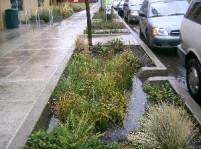 Stormwater planter Click to enlarge |
Planters utilize plants that can tolerate wet soil in the winter and dry conditions in the summer. The plants are a mix of native and non-native that grow 2 to 3 feet high, preferably evergreen. Rushes and sedges are commonly used. Flower bulbs add color. Street trees are planted whenever possible.
Recent East Multnomah County installations include:
| Street | Between | Type |
|---|---|---|
| NE Glisan St | NE 122nd Av - NE 148th Av | Curb extension |
| SE Stark St | SE 190th Av - SE 199th Av | Stormwater planter |
| NE 242nd Ave | NE Glisan St - SE Stark St | Stormwater planter |
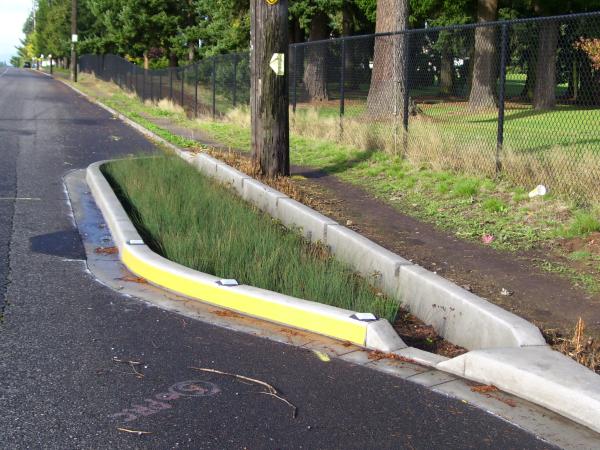 NE Glisan St Click to enlarge |
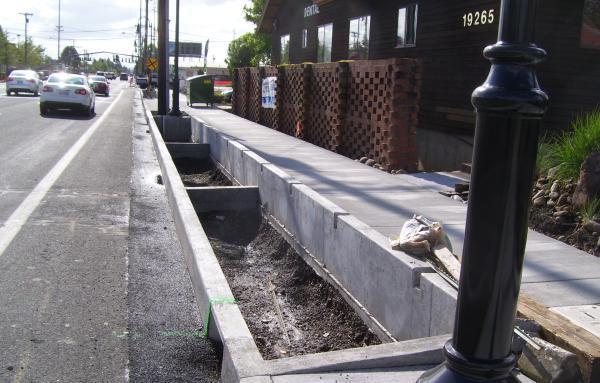 SE Stark St Click to enlarge |
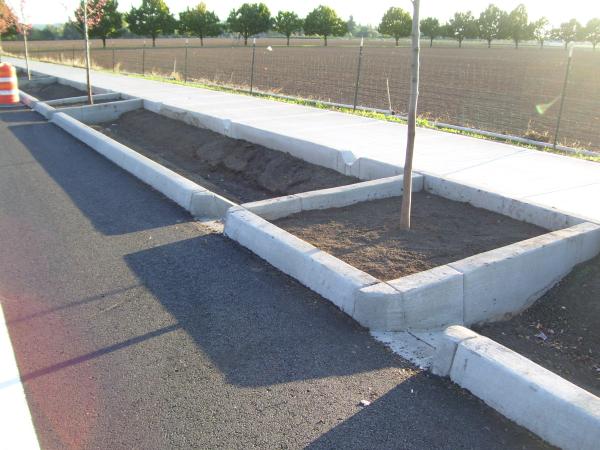 NE 242nd Av Click to enlarge |
Frequently Asked Questions
- Will a stormwater planter breed mosquitoes?
Mosquitoes breed in standing water. Stormwater planters are designed to drain in less than 48 hours to prevent breeding. - Does a stormwater planter collect pollutants?
Plant roots and soil organisms in stormwater planters help break down stormwater pollutants - Will existing street trees be removed?
Usually not. Trees catch and absorb rain, and are important to sustainable stormwater management efforts. - Will planters remove parking?
It depends on the type. Stormwater planters (located between the curb and sidewalk) accommodate parking, while curb extensions replace parking with a planter and landscape.
How You Can Help
The cities welcomes help from neighbors to keep the stormwater planters free of litter and leaves. The next time you stop to admire a stormwater planter's beauty take a moment to ensure it remains litter-free.
Learn more
To learn more about Green Streets, stormwater planters and curb extensions visit the websites listed below.
Related Links
- SW 12th Avenue Green Street Project (City of Portland, Oregon)
- PSU Stormwater Walking Tour (City of Portland, Oregon)
- City of Portland Stormwater Management Program (WERF)
- A Green Street Overview (City of Portland, Oregon)
















